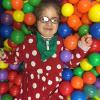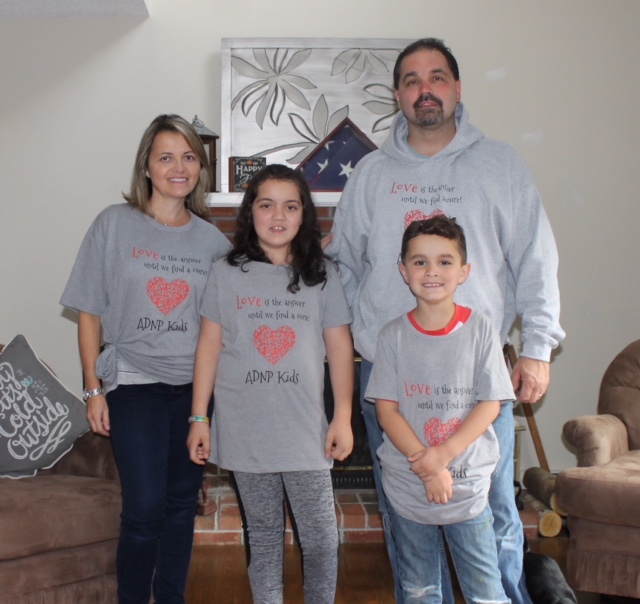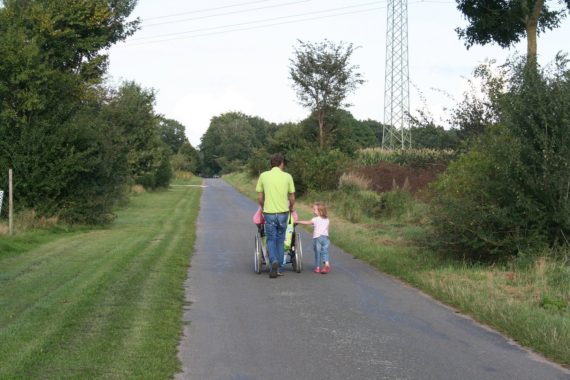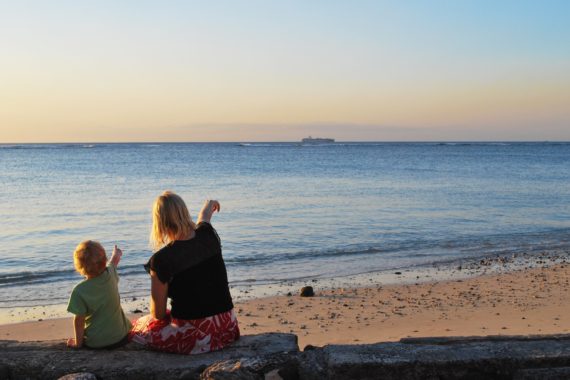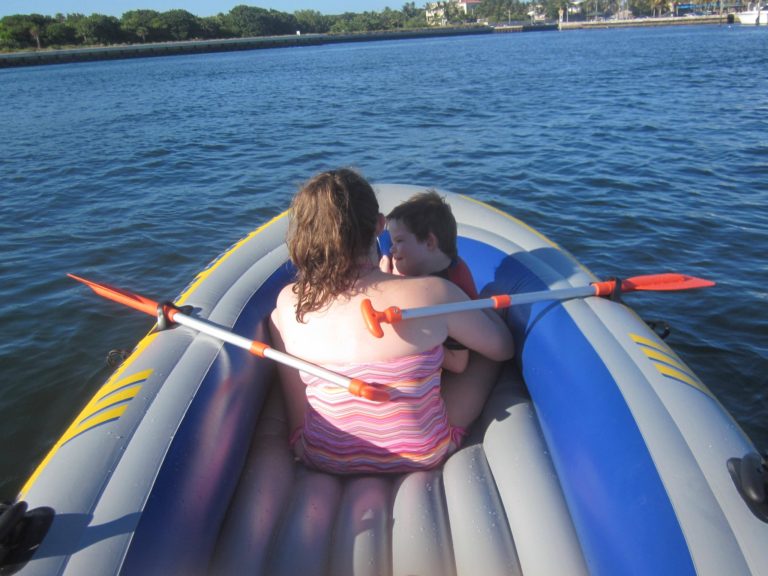Rare Share: Sharing Stories from the Rare Disease World
Grace's Story:
After thinking that we were not able to have children we got a lovely surprise! I was 42 when Grace was born. My pregnancy was wonderful except for the fact that Grace was small. She entered the world after doing beautifully through about 15 hours of labor needing some help to breathe. After holding her for about 15 seconds she turned blue and my life as I thought it would be was changed forever. We got our diagnosis when Grace was 8 days old. At first we were told she was complete Trisomy 9. When I googled it almost 6 years ago it was a terrifying diagnosis. I will never get those images out of my brain…the Dr. told us if she made it to her first birthday there was some hope. What a moment that was…We had a one in a hundred million baby.
But after 4 months in the NICU of 2 different hospitals we were finally able to go home with a Trach, a GJ Tube and the need for a nurse. Grace thrived at home! She grew stronger and stronger!! Not having to work so hard to breathe made such a huge difference. At 8 months of age we were cleared for tastes and we have never looked back. Today one could say my child is non verbal, non ambulatory, global delayed, CVI issues, dependent on a Trach and feed through a G Tube. We say we have a kind, happy almost 6 year old who needs support to walk but when she gets in that gait trainer boy does she fly!!! She is learning to communicate using pictures to make her choices, signs more ( especially if it’s for more bubbles) and participates in determining what she participates in day to day. Grace is delayed but we were able to place her in a fully inclusive Kindergarten where she comes alive around children, her vision is improving with the right supports and although she needs a trach to sleep can be capped during the day which means she can go in the pool!!! And finally our little girl who had such oral aversion that it took about 2 years for us to see her tongue now eats mushed bananas, yogurt and anything else I can puree for her. She loves to eat by mouth!
We have been so thankful to Facebook because without it we would never have made connections to other Trisomy 9 M families. We know so much more about our diagnosis and we have hope that the next families who receive this diagnosis might see our wee girl when they google it. And realize that it does not have to be as terrible as they might have first thought.
Thank you to everyone who has shared their stores for our Rare Share. The stories show how different yet how similar the rare disease world is. Enjoy reading these amazing, heartfelt stories!
Hanna's Story:
Our daughter, Hanna, was born in Massachusetts with a very rare disease called ADNP syndrome, also known as Helsmoortel -VanDer A syndrome. So far, she is the only child who has been diagnosed in our state. It is an extremely rare neuro-developmental disorder caused by a mutation in the ADNP gene (activity dependent Neuroprotective protein). This gene is responsible for brain formation and development as well as brain function.
Hanna is almost 12 years old and was just diagnosed right after her 10th birthday in 2016. It was very hard being undiagnosed for 10 years. During every appointment, before she was diagnosed, the specialist didn’t know what they were dealing with; because of this, therapies and medical approaches were very generic towards a global developmental delay. This syndrome was discovered in 2014. There is not a lot of information about it and for this reason we hope for support and awareness. We want more support for undiagnosed families through more affordable testing and of course, we want to find a cure.
One of the obstacles that we encountered was the lack of support and information. We founded our ADNP tribe in 2016 when we got Hanna’s results. After the founding of the ADNP tribe we became connected with a group of parents through social media that had the same diagnosis. This group became our family and the support that we never had. They understood our concerns, answered tons of questions we had and acknowledged the grief that comes with this diagnosis.
Hanna is growing as a young girl trying to do her best. She does daily therapies and also participates in extra school activities that improve her independent participation in society. Her intellectual disability is a challenge but we are hopeful for a cure for this syndrome. We hope that Hanna can benefit from it and that it won’t be too late.
For more information about ADNP please visit www.adnpkids.com
Harriet's Story:
My name is Harriet and I have an ultra-rare disease currently 1 in 200K. It is called Glycogen Storage Disease Type 5 or McArdle's after the English Dr. John McArdle who first identified it in the 1950's. People with McArdle’s have a problem with the use of energy in their muscles. Symptoms arise because affected people cannot use a form of sugar (called glycogen) which is stored in the muscles.
It is a Neuromuscular Metabolic Disease and is Autosomal Recessive meaning both of my parents carried a copy of a matching flawed gene. I inherited a flawed copy from each of them which means I have the disease. I won the genetic jackpot.
To be more serious, I noticed at a very early age that I could not keep up with others and my heart would be beating very fast and I could barely move my cramped legs and other muscles. My parents tried very hard to get a diagnosis. I was misdiagnosed many times with things I did not have including Juvenile Arthritis.
I carried around the anguish of being called lazy, looking for attention and bullying by peers.
Over the years I would feign a knee injury, an untied shoe or anything that allowed me to take a break and rest. It is possible for McArdle people to make activity a bit easier by learning to get into “second wind”. This is when the muscles start to make more use of other forms of energy – mainly sugar released from stores in the liver, and fat. By regularly exercising in “second wind” I could more easily attend to activity and avoid muscle injury and progressive muscle breakdown.
At age 55 I was given a statin drug it caused me horrible pain and my Creatine Kinase (a marker for muscle breakdown to be extremely high) normal CK is under 200; mine was 48,000. About 50% of people with GSD5 experience Rhabdomyolysis and/or Myoglobinuria.
I insisted seeing a specialist and was referred to a Neurologist and after hearing my story (especially second wind) he ordered a muscle biopsy. I was then confirmed to have GSD5.
I can no longer work but have discovered resources for those with Glycogen Storage Disease. The Association for Glycogen Storage disease in the US and Association for Glycogen Storage Disease in the United Kingdom. In the U.K. they employ a comprehensive medical model with onsite support. They have a coordinator with Type 5. He and others with McArdle's have developed materials and tips on how to improve our lives by learning how manage our condition. A recent group I.AM. GSD has been founded in the U.S. Their charter is more geared towards education, advocacy and research. Part of their mission is to lower the age of diagnosis to 10 yrs. old. Early diagnosis and medical intervention can prevent lasting muscle damage leading to better long-term outcomes for patients like myself.
I have attended a Walk on Martha's Vineyard sponsored by the Assoc Glycogen Storage Disease UK. I meet others with GSD5. I learned how to best utilize "second wind” and hiked all over Martha's Vineyard with people just like me. It was truly life changing. I learned valuable information and continue to learn how to best manage my condition.
Wonder Moms Story:
Miranda W. is a single mom and English teacher. Her 5-year-old son is on the autism spectrum and is more than a little obsessed with boats. Having grown up in a family that emphasized achievement and traditional education, Miranda’s parenting journey has given her a whole new perspective on how schools can and should work. She is passionate about inclusion and special education.
Christy C. is a stay-at-home mom who gives music lessons part-time. She and her husband have two kids – a 12-year-old daughter who is academically gifted and a 6-year-old son who has Down Syndrome and autism. Christy volunteers with her local Down Syndrome organization and leads a music therapy playgroup once a month.
Jackie N. is a former pediatric nurse and now a full-time homeschool educator. She and her husband have three children. Their middle child suffered a traumatic brain injury when she was 4. Now 11 years old, she is hearing impaired and uses a wheelchair. Despite her challenges, she loves teasing her 14-year-old brother and watching “My Little Pony” cartoons with her 5-year-old sister.
Together Miranda, Christy, and Jackie have created Wonder Moms, a blog started by three moms to share real talk, information and practical advice with parents of kids who have intellectual disabilities, Down syndrome, autism, language and speech delays, deafness, chronic illness, and traumatic brain injury.


